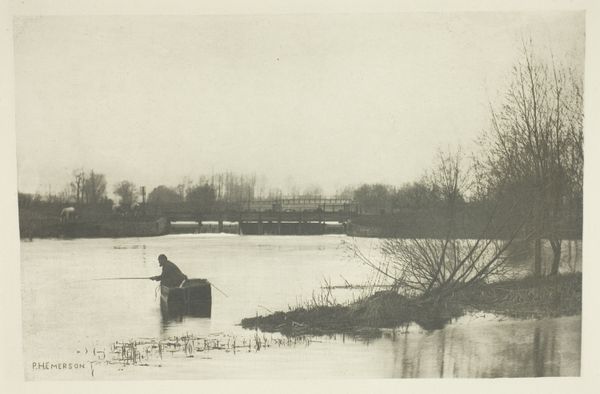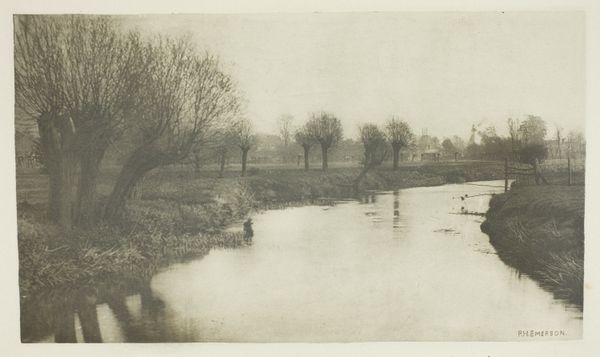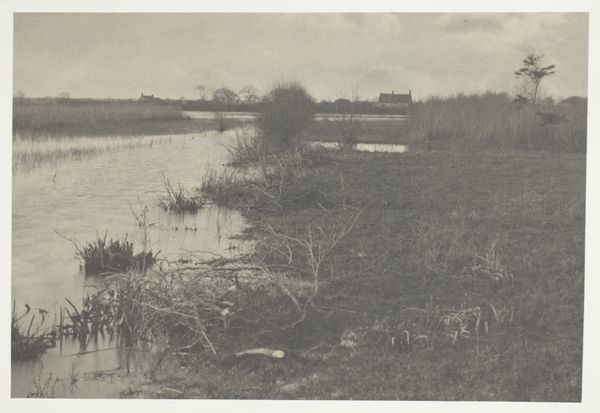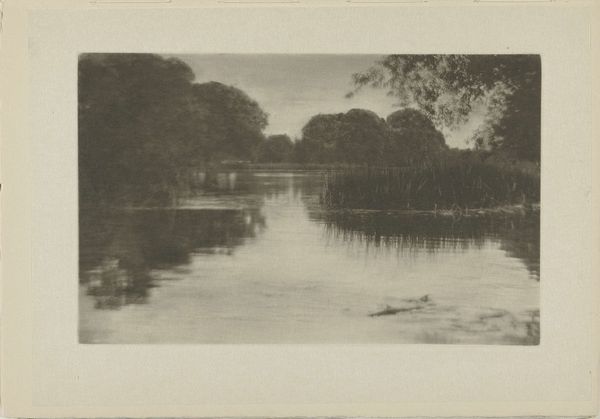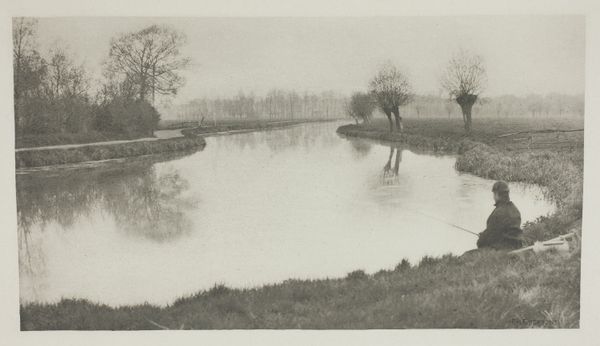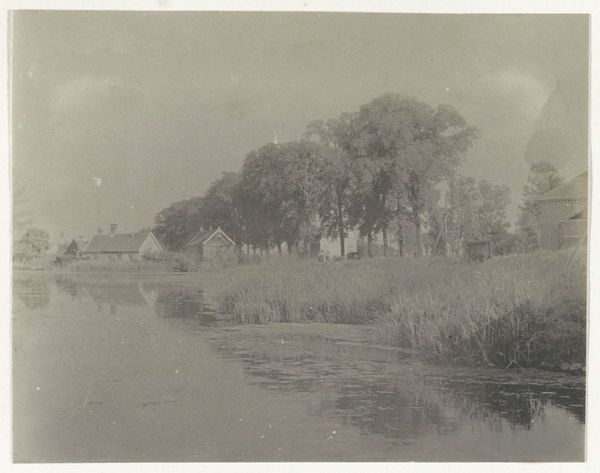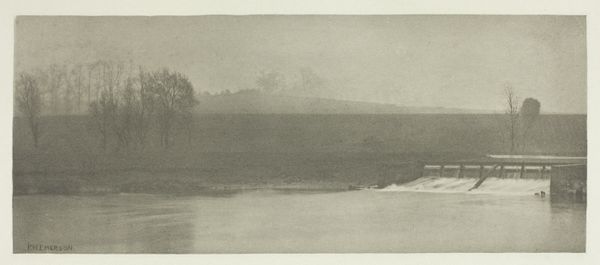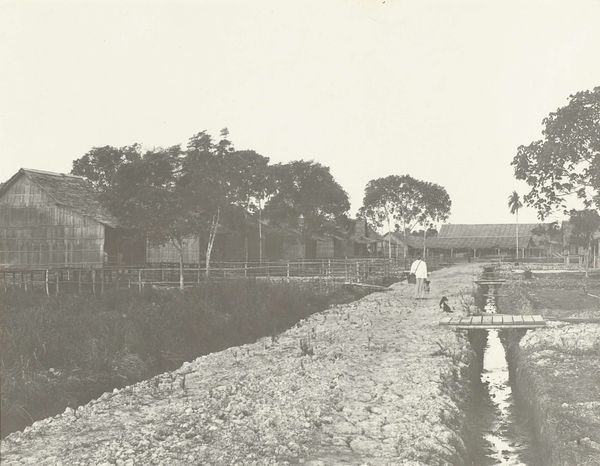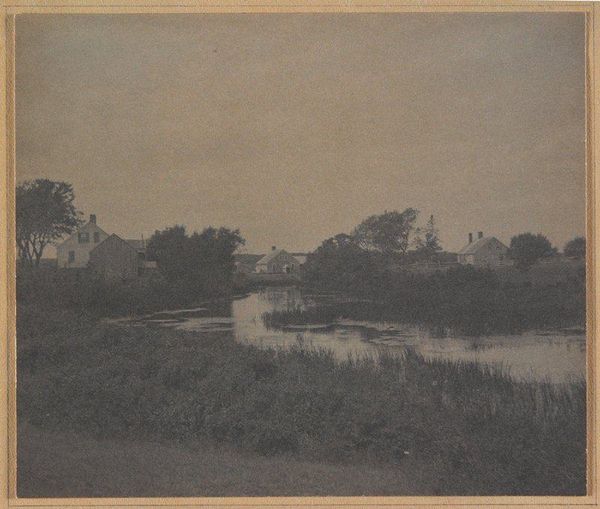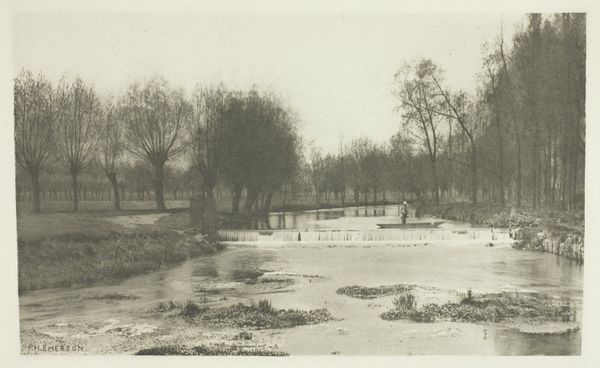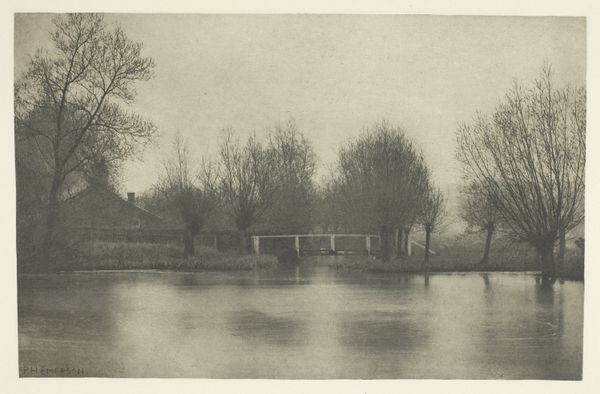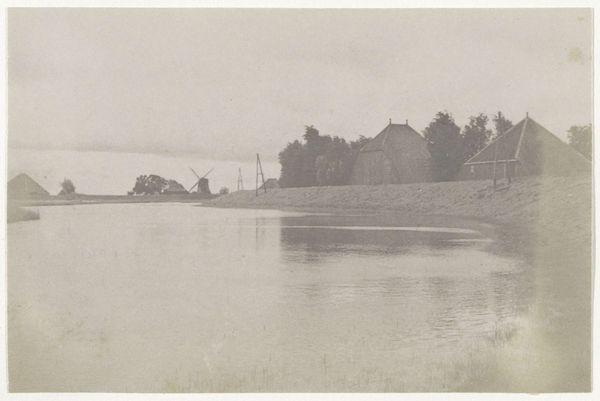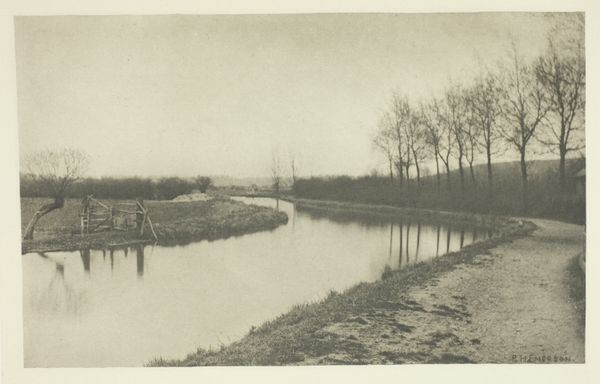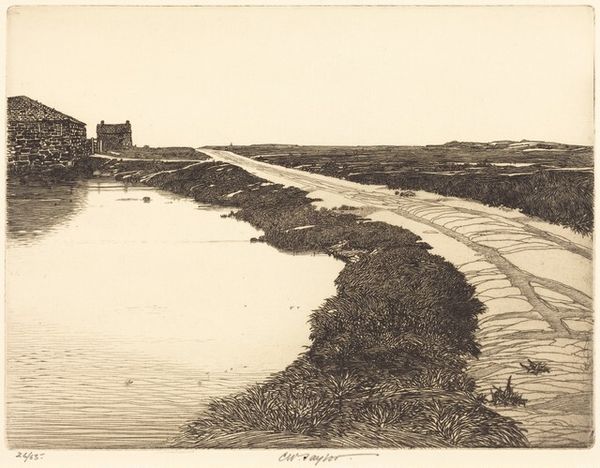
print, photography, gelatin-silver-print
still-life-photography
pictorialism
impressionism
landscape
outdoor photograph
outdoor photo
photography
gelatin-silver-print
Dimensions: 10.1 × 22.1 cm (image/paper); 33.6 × 42.4 cm (album page)
Copyright: Public Domain
Editor: Here we have "The Fringe of the Mere," a gelatin-silver print made by Peter Henry Emerson around 1883-1888. It’s so evocative. It almost looks like a painting, and it's incredibly atmospheric. How do you interpret this work? Curator: Emerson's piece is deeply embedded in a debate around the status of photography in the late 19th century. Was it simply a mechanical reproduction or a legitimate art form? Emerson championed "naturalistic photography," arguing that photographs should mimic human vision and capture the essence of a scene. He wanted to push back against manipulated photographs of the era. Editor: So, by calling it "naturalistic," he was advocating for a kind of truthfulness? Curator: To a point, but truthfulness was a carefully constructed aesthetic. Look at the soft focus, the tonal range, almost mimicking an impressionistic painting. Consider also the context: he photographed rural East Anglia, an area idealized as the heart of Englishness during a period of rapid industrialization and urbanization. What’s the impact of that imagery? Editor: So it’s not just a neutral depiction of nature; it’s a deliberate construction of an idea about England? I see the reeds in the foreground feel almost intentionally placed and almost sentimentalized. Curator: Precisely. And how might the popularization of photography affect painting in this period? Were painters influenced or competing? What impact do you see this type of work having on the development of photography as fine art? Editor: It's fascinating to think about photography shaping our understanding and idealization of a landscape. This photo isn't just showing us a place; it's telling us what that place *should* mean. I didn't think about that until now. Curator: And in doing so, helps elevate photography to fine art! A complicated task considering the social forces influencing perception. We both can carry that knowledge into further research.
Comments
No comments
Be the first to comment and join the conversation on the ultimate creative platform.
